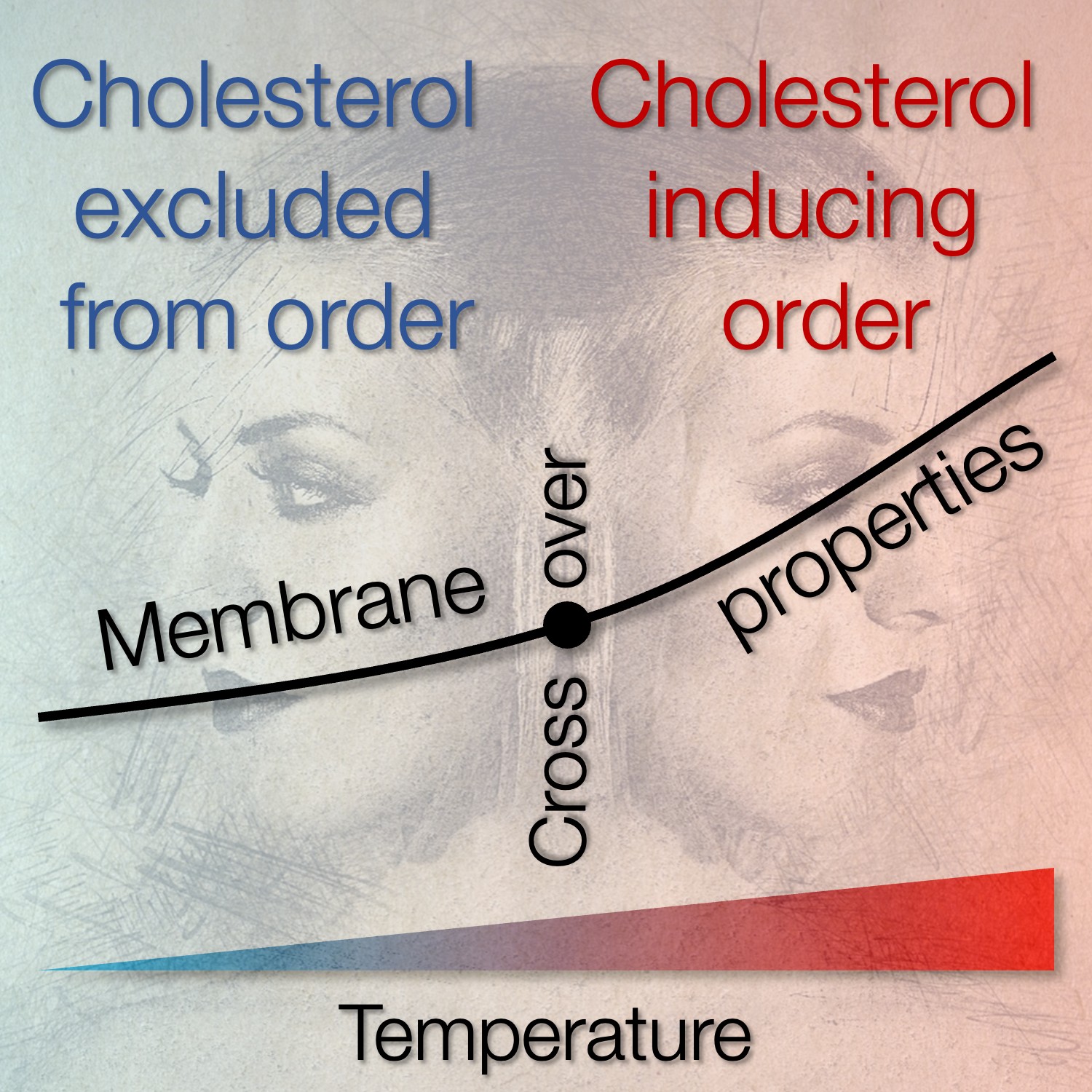Modeling heterogeneity of biological membranes – two faces of the liquid ordered phase

To model heterogeneity of biological membranes, including the putative lipid rafts, researchers commonly use synthetic and plasma membrane-derived vesicles with coexisting liquid ordered (Lo) and liquid disordered (Ld) lipid phases. However, raft-associated proteins exclusively partition to the Ld and not the Lo phase in these model systems.
Researchers led by Matti Javanainen from Pavel Jungwirth Group at IOCB Prague and the University of Helsinki and Piotr Jurkiewicz from J. Heyrovský Institute of Physical Chemistry of the CAS, with Itay Schachter as the first author, investigated structural diversity of the Lo phase across different temperatures using atomistic molecular dynamics simulations, differential scanning calorimetry, and fluorescence spectroscopy.
Their results reveal that two very different molecular structures are associated with the Lo phase. At room temperature, the membrane contains tightly packed and collectively diffusing lipid clusters. Upon heating to the physiological temperature, the membrane undergoes a transition at which the clusters melt, and the now freely diffusing lipids are able engage in favorable contacts between Lo-phase lipids and raft-associated proteins.
Considering the complexity of the plasma membrane, both described structures might be present in vivo depending on the local lipid composition. This structural diversity of the Lo phase should be considered, especially when cellular membrane heterogeneity is studied using model systems.
Read the paper:
- Schachter, I.; Paananen, R. O.; Fábián, B.; Jurkiewicz, P.; Javanainen, M. The Two Faces of the Liquid Ordered Phase. J. Phys. Chem. Lett. 2022, 1307-1313. https://doi.org/10.1021/acs.jpclett.1c03712






